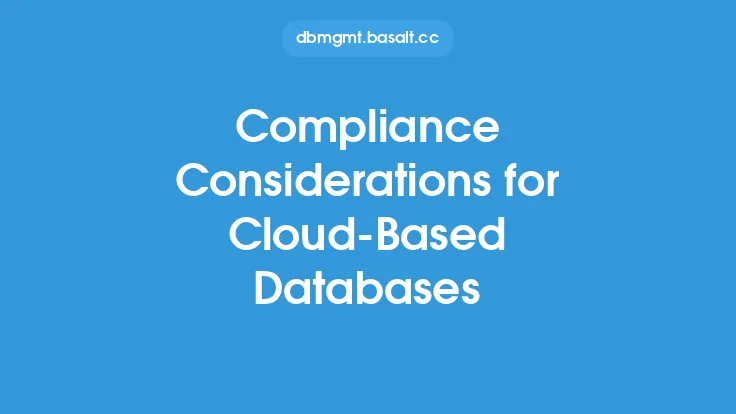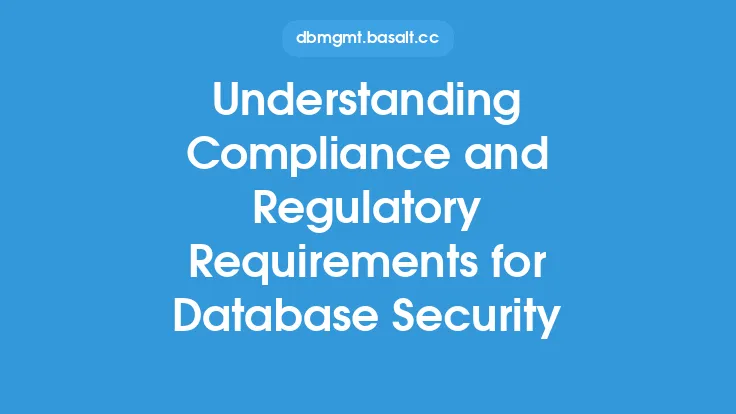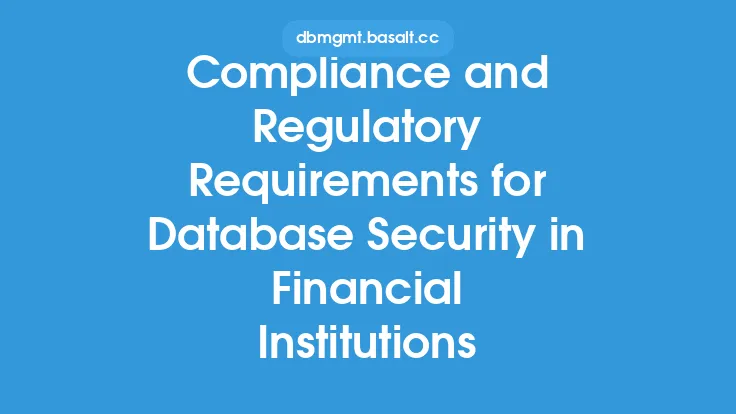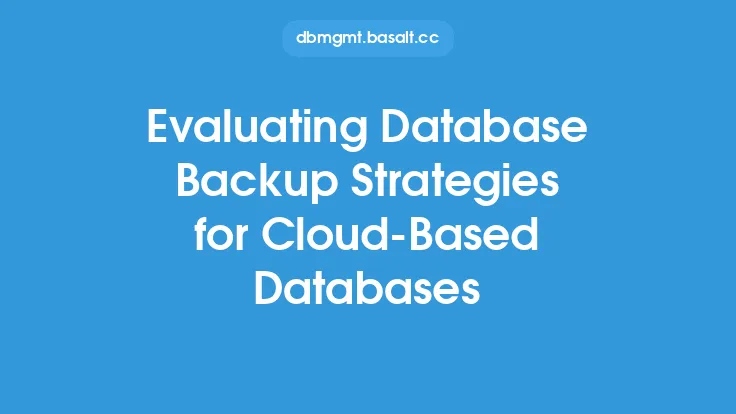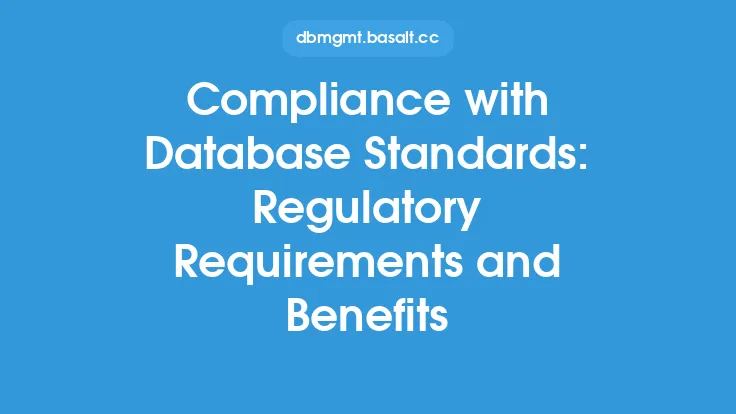As organizations increasingly move their databases to the cloud, they must navigate a complex landscape of compliance and regulatory requirements. Cloud-based databases offer numerous benefits, including scalability, flexibility, and cost savings, but they also introduce new security and compliance challenges. In this article, we will delve into the compliance and regulatory requirements for cloud-based databases, exploring the key considerations and best practices for ensuring the security and integrity of sensitive data.
Introduction to Cloud-Based Database Compliance
Cloud-based databases are subject to a wide range of compliance and regulatory requirements, which vary depending on the industry, location, and type of data being stored. These requirements are designed to protect sensitive information, prevent data breaches, and ensure the confidentiality, integrity, and availability of data. Compliance with these regulations is crucial, as non-compliance can result in significant fines, reputational damage, and legal liability.
Key Compliance and Regulatory Requirements
Several key compliance and regulatory requirements apply to cloud-based databases, including:
- Data sovereignty and localization requirements, which dictate where data can be stored and processed
- Data protection and privacy regulations, such as the General Data Protection Regulation (GDPR) and the California Consumer Privacy Act (CCPA)
- Industry-specific regulations, such as the Payment Card Industry Data Security Standard (PCI DSS) and the Health Insurance Portability and Accountability Act (HIPAA)
- Cloud security standards and frameworks, such as the Cloud Security Alliance (CSA) and the National Institute of Standards and Technology (NIST) Cybersecurity Framework
- Audit and assurance requirements, such as SOC 2 and ISO 27001, which provide independent verification of an organization's security controls and processes
Cloud Service Provider Compliance
When using a cloud service provider (CSP) to host a cloud-based database, it is essential to ensure that the CSP complies with relevant regulatory requirements. This includes:
- Reviewing the CSP's security controls and processes to ensure they meet industry standards and best practices
- Evaluating the CSP's compliance with relevant regulations, such as GDPR, HIPAA, and PCI DSS
- Assessing the CSP's data sovereignty and localization policies to ensure they meet organizational requirements
- Negotiating contractual terms and conditions that ensure the CSP's compliance with regulatory requirements and industry standards
Data Encryption and Access Controls
Data encryption and access controls are critical components of cloud-based database compliance. This includes:
- Implementing robust encryption protocols to protect data at rest and in transit
- Using secure authentication and authorization mechanisms to control access to the database
- Implementing role-based access controls to ensure that only authorized personnel have access to sensitive data
- Regularly reviewing and updating access controls to ensure they remain effective and aligned with organizational policies
Monitoring and Incident Response
Effective monitoring and incident response are essential for detecting and responding to security incidents in cloud-based databases. This includes:
- Implementing real-time monitoring and logging to detect potential security threats
- Developing incident response plans and procedures to respond to security incidents
- Conducting regular security audits and risk assessments to identify vulnerabilities and weaknesses
- Providing training and awareness programs to ensure that personnel understand their roles and responsibilities in responding to security incidents
Best Practices for Cloud-Based Database Compliance
To ensure compliance with regulatory requirements and industry standards, organizations should follow best practices for cloud-based database compliance, including:
- Conducting thorough risk assessments to identify potential security threats and vulnerabilities
- Implementing robust security controls and processes to protect sensitive data
- Regularly reviewing and updating compliance policies and procedures to ensure they remain effective and aligned with regulatory requirements
- Providing training and awareness programs to ensure that personnel understand their roles and responsibilities in maintaining compliance
- Continuously monitoring and evaluating the effectiveness of compliance controls and processes to identify areas for improvement
Conclusion
Compliance and regulatory requirements for cloud-based databases are complex and multifaceted, requiring organizations to navigate a wide range of industry standards, regulations, and best practices. By understanding the key compliance and regulatory requirements, ensuring CSP compliance, implementing robust data encryption and access controls, monitoring and responding to security incidents, and following best practices, organizations can ensure the security and integrity of their cloud-based databases and maintain compliance with relevant regulatory requirements.
